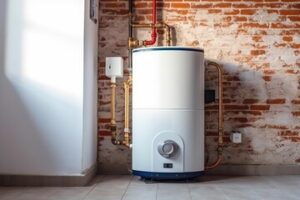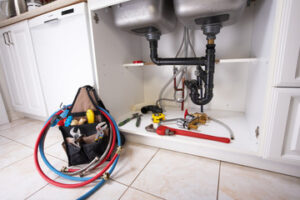There are many options for your water heater, gas, and electric, tankless, different sizes, and more. Take your time to explore these and find the suitable unit for your needs.

Consider your household water consumption – how many showers, baths, and loads of laundry are used daily. Look at EF (Efficiency Factor) ratings to see how efficient the units are. Contact Hot Water Heaters Denver for more details.
Water heaters consume a significant amount of energy in the typical home. Upgrading to a new, efficient model is an opportunity for homeowners to save money and reduce energy consumption and greenhouse gas emissions. New ENERGY STAR(link is external) water heaters, including both storage and tankless models, have been engineered to be more efficient than the standard units that most homes currently have in place. To help consumers find the right products, ACEEE has partnered with Enervee Marketplace(link is external) to provide a comprehensive list of qualified electric and gas water heaters.
ENERGY STAR(link is External) has set appliance efficiency standards that require the majority of water heaters sold in the United States to meet certain minimum efficiency levels. These standards, based on tank size and recovery efficiency, are expected to save consumers about $1 billion per year by 2020. Consumers can look for a product’s energy factor (EF) rating, which is an overall measure of efficiency based on recovery efficiency, standby losses, and cycling loss. The higher the EF, the more efficient the unit.
The new ENERGY STAR ratings apply to both gas and electric water heaters, which operate in roughly half of all households. The efficiency of gas tank water heaters is measured by their EF, while electric models are judged on the basis of their thermal efficiency and kilowatt-hour (kW-hr) energy usage. During the testing process, the water heaters are subjected to a rigorous heavy use pattern – the daily equivalent of multiple showers, washing machines, and dishwasher runs – to simulate real-world energy use. The resulting ratings are comparable to the performance of traditional tanks under the same conditions.
Gas and electric tankless water heaters are rated on their thermal efficiency, with the best models boasting a COP of 0.85 or better. Some manufacturers offer models with even higher efficiencies; for example, heat pump water heaters, which draw heat from the air instead of burning fossil fuels, have a COP of about 1.0. Because these models rely on renewable energy to do their work, they have lower environmental impacts than standard electric water heaters.
Safety
Although it may seem ordinary on the outside, your hot water heater has an ingenious design on the inside. A little effort can keep it in good shape and safe for you and your family.
Most electric and gas water heaters use more energy than anything else in the house, sans your heating and cooling system. Depending on the size, you can easily save up to 30 percent on energy costs with a new, more efficient unit.
Water heaters have a thermostat that controls the temperature, but sometimes it fails. When it does, the tank’s water can get super-heated to 212oF (100o C), which poses a serious scalding danger. A well-designed unit will include a pressure relief valve to prevent the tank from exploding under this extreme heat and pressure. Checking and testing this valve periodically is essential for safety.
When you’re installing a new water heater, it’s always important to have it professionally installed. A faulty installation can lead to carbon monoxide poisoning and other dangerous conditions, so you want to have an experienced plumber handle the job.
There are other safety considerations to take into account, too. Most of these are related to flammable materials around the hot water heater, especially when it’s located in a garage. A hot water heater can release flammable gases, and when the garage is filled with gasoline-fueled cars or lawnmowers, they can ignite in the right conditions. Keeping everything combustible away from the water heater will prevent this.
In addition, it’s a good idea to install an automatic gas shutoff valve on your natural gas line to your water heater. This can cut off the flow of gas if it’s accidentally turned on, which could prevent a fire from starting and a potentially deadly explosion. Getting this installed will give you peace of mind and a sense of security, particularly in the case of an unexpected disaster that causes your gas line to break. This is a common issue that can be very dangerous if not dealt with quickly and properly by an expert.
Maintenance
Do you find yourself running out of hot water during showers, washing dishes or laundry? This is a sign that your heater needs maintenance. A little bit of work can make a big difference.
First, check to see that the circuit breaker hasn’t tripped. If it has, simply switch it back on from your home’s main power supply. If you don’t find any electrical problems, there may be a problem with the thermostat. It could be loose, dirty or corroded. If this is the case, you’ll need to remove the access panel to access the thermostat and clean it.
If you’re having trouble with a gas water heater, the problem could be as simple as the pilot light not being lit. First shut off the water and electricity supply, then turn off the gas valve. Next, open the drain valve at the bottom of the tank and connect a garden hose to it. Drain about 10 percent of the water in the tank. If the pilot light is still not lit, use a lighter to light it or consult the manufacturer’s lighting instructions.
A leaking water heater can cause serious damage to your house. It’s important to fix this as soon as possible. If the leak is coming from a pressure relief valve, it’s corroded and needs to be replaced. To do this, shut off the water and electricity. Next, disconnect the vent pipe from the water heater and attach a hose to the drainage valve at the bottom of the tank. Open the valve and allow water and sediment to drain.
If you have an electric water heater, it’s best to drain and flush it twice a year. This prevents buildup of rust and debris, and keeps the water clean. The sacrificial anode rod, located at the top of the tank, is another safety component that needs to be checked regularly. If it has a few inches of exposed core wire, you should replace it with a new one. Finally, test the temperature and pressure relief valve by releasing it for about five seconds into a bucket.
Installation
There are many types of water heaters to choose from, including gas and electric models. Most of these are traditional, with an insulated tank that can hold from 20 to 80 gallons of hot water. These units use a thermostat to record the temperature of the water inside the storage container. When the reading drops below a preset level, the heater kicks in to heat the water back up to prescribed temperatures. The unit can also be controlled manually to control the flow of hot water in the home.
When replacing a hot water heater, it is recommended that you use a professional installer. This will ensure that the installation is done correctly and follows all local and national plumbing, building and electrical codes. It is also important to follow the printed installation instructions that come with your new water heater.
Before you begin any work, turn off the water and electricity supply to the old heater. This can be done by turning off the corresponding valves. Then, disconnect the old water pipes using a pipe wrench or channel-lock pliers. Depending on the type of water heater, you may need to remove a cover or insulation to access the thermostat. This should be done carefully to avoid damage.
After you’ve removed the old water heater, prepare the new one for installation. Obtain all the tools needed and follow the printed instructions. It’s best to have a helper for this part of the job. If you don’t have a helper, consider hiring a plumber or using a local water heater service provider to install the new unit.
Before you connect the new water heater, make sure it has a Temperature and Pressure (T&P) relief valve factory installed. This valve will prevent the buildup of pressure that could cause the unit to explode, causing serious injury or property damage. If your new water heater does not have a T&P relief valve already installed, you must buy and install a new valve with a rated discharge capacity that is equal or greater than the hot water heater’s BTU-input rating.


